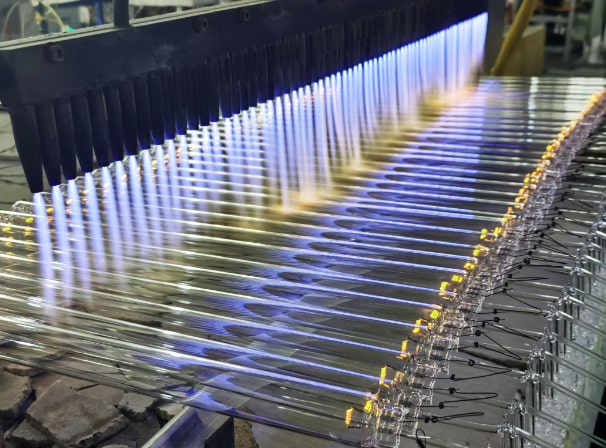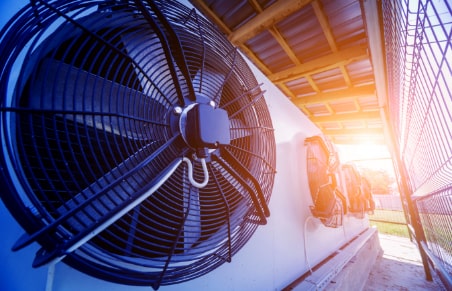UV Lamps with Germicidal Properties Vs Bipolar Ionization: Which is Better?
The pandemic saw a rise in disinfection technologies claiming to clean the environment from the coronavirus and other viral and bacterial particles effectively. Although we already had UV lamps for germicidal effects, people started shifting to complex disinfection technologies such as bipolar ionization.
However, people didn’t realize most of these technologies weren’t tested and researched properly, instead launched in the market with the intent of making a profit by fearmongering people.
Now that the world has come out of the cycle of the coronavirus spread, people are noticing the difference in disinfection from UV lamps and technologies like bipolar ionization. People are realizing the lack of research in technologies such as bipolar ionization.
Although, UV lamps with germicidal effects are a clear winner, let’s see how it compares to bipolar ionization in terms of technology and its aftereffects.
UV Germicidal Disinfection Using UV lamps
UV Germicidal disinfection is based on a simple concept of using UV light of different wavelengths to kill any bacterial, viral, and other harmful components in an indoor space.
Also, UV light is naturally present in the sunlight and helps keep the spread of microorganisms limited on earth along with other applications. There are three types of UV lights: UV-A, UV-B, and UV-C.
UV light wavelengths range from 10 nm to 400 nm. UV light of wavelength below 290 nm is known to have germicidal effects. Hence, the UV lamps used for disinfection produce wavelengths below 290 nm.
UV light can mutate the genetic makeup of cells and kill them eventually.
Bipolar Ionization
This technology is usually found in air purifiers claiming to clean the indoor air of any harmful particles. In this technology, the appliance will produce positive and negative charges and attach them to other particles in the air. This makes these pollutant particles heavier, and easier to be caught in the air filters.
However, the health impacts of this technology are largely unknown due to the lack of adequate research.
Treatment Speed
- Bipolar Ionization takes more than 60 minutes to purify the air of pollutants particles, especially pathogens.
- UV Lamps with Germicidal Properties take up to 30 seconds to reduce the number of pathogens in the air and on the surface.
Safety Concerns
- UV Light Disinfection
This technology has been around for years and has been used in labs, industrial units, and more commercial places that need constant disinfection to maintain hygiene.
In fact, governmental agencies such as the Federal Emergency Management Agency (FEMA), the CDC, The United States Army, and more use and approve UV light disinfection in indoor spaces. For UV light disinfection, you can find the following technologies:
- For air, you can find air purifiers with UV lamps. You can also find HVAC air disinfection that uses UV lamps for germicidal effects.
- For surface, you can find several surface-top UV lamps for disinfection. These lamps will provide localized disinfection. Also, most of these lamps will have auto cut-off features switching them off if someone enters the room during disinfection.
When buying UV lamps for disinfection, ensure you buy them from a certified and authorized company with the right license to provide the UV light products. Several UV products in the market, such as sanitizing wands, practically do nothing but cause more harm due to negligent usage.
- Bipolar Ionization
There are major safety concerns related to bipolar ionization since it hasn’t been researched properly. There have been several false claims about bipolar ionization and its disinfection effects along with its safety.
This has currently resulted in a federal lawsuit against one of the manufacturers where the safety of this technology and the company’s claims are being contested. However, the federal lawsuit aside, the safety of this technology is highly debated. Most of the research for testing the efficacy of this technology is done in closed chambers which doesn’t mimic the real-life conditions of most people.
The Environmental Protection Agency (EPA) has reported that bipolar ionization can generate ozone particles along with other harmful pollutants. It has also been observed that ionization can produce particles used in paints, aerosols, paint strippers, and pesticides.
As you can see, bipolar ionization lacks enough research to put concrete facts regarding its safety.
Bottom Line
When it comes to choosing the disinfection technology for residential, commercial, and industrial spaces, UV lamps with disinfection properties are a wise investment.
If you are looking to buy UV lamps with disinfection properties, you can get in touch with us at Light Spectrum Enterprises, Inc. With more than 20 years of experience in this industry, we have provided our products to the best of clients in the market. We are also EPA certified to provide UV lamps with germicidal properties.
Contact our sales team to know more about how we can help you disinfect your space.



